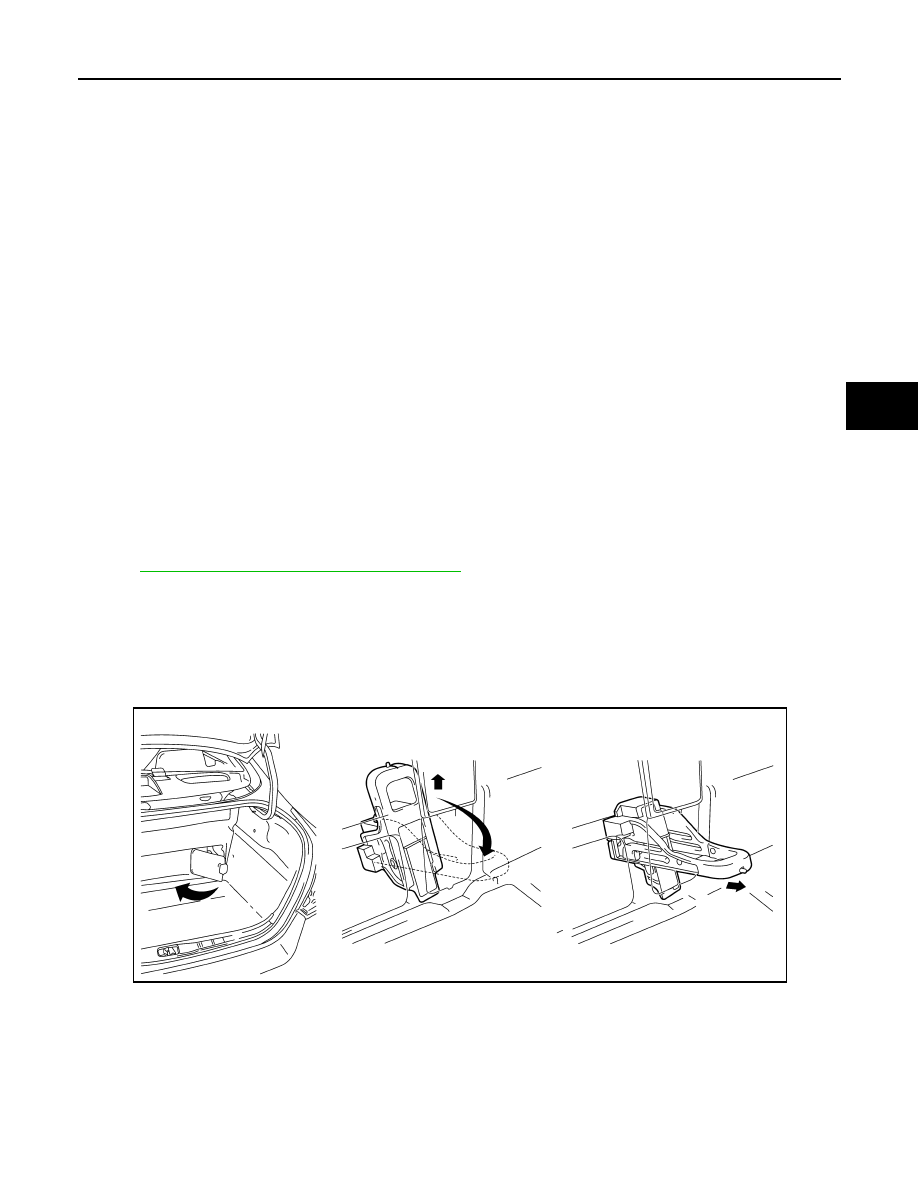Nissan Altima HL32 Hybrid. Manual - part 156

PRECAUTIONS
BRC-189
< PRECAUTION >
[VDC/TCS/ABS]
C
D
E
G
H
I
J
K
L
M
A
B
BRC
N
O
P
PRECAUTION
PRECAUTIONS
Precaution for Supplemental Restraint System (SRS) "AIR BAG" and "SEAT BELT
PRE-TENSIONER"
INFOID:0000000004212764
The Supplemental Restraint System such as “AIR BAG” and “SEAT BELT PRE-TENSIONER”, used along
with a front seat belt, helps to reduce the risk or severity of injury to the driver and front passenger for certain
types of collision. This system includes seat belt switch inputs and dual stage front air bag modules. The SRS
system uses the seat belt switches to determine the front air bag deployment, and may only deploy one front
air bag, depending on the severity of a collision and whether the front occupants are belted or unbelted.
Information necessary to service the system safely is included in the SR and SB section of this Service Man-
ual.
WARNING:
• To avoid rendering the SRS inoperative, which could increase the risk of personal injury or death in
the event of a collision which would result in air bag inflation, all maintenance must be performed by
an authorized NISSAN/INFINITI dealer.
• Improper maintenance, including incorrect removal and installation of the SRS, can lead to personal
injury caused by unintentional activation of the system. For removal of Spiral Cable and Air Bag
Module, see the SR section.
• Do not use electrical test equipment on any circuit related to the SRS unless instructed to in this
Service Manual. SRS wiring harnesses can be identified by yellow and/or orange harnesses or har-
ness connectors.
Precautions For High-Voltage System
INFOID:0000000004212765
GI-24, "Precautions For High-Voltage System"
.
Precautions for Inspecting the Hybrid Control System
INFOID:0000000004212766
• Before inspecting the high-voltage system or disconnecting the low voltage connector of the inverter with
converter assembly, take safety precautions, such as wearing insulated gloves and removing the service
plug grip to prevent electrical shocks. Make sure to turn the ignition switch OFF before removing the service
plug grip. After removing the service plug grip, put it in your pocket to prevent other technicians from acci-
dentally reconnecting it while you are working on the high-voltage system.
NOTE:
Turning the ignition switch ON (READY) with the service plug grip removed could cause a malfunc-
tion. Do not turn the ignition switch ON (READY) unless instructed by the service manual.
• After disconnecting the service plug grip, wait for at least 10 minutes before touching any of the high-voltage
connectors or terminals.
NOTE:
Waiting for at least 10 minutes is required to discharge the high-voltage capacitor inside the inverter with
converter assembly.
ALCIA0007ZZ